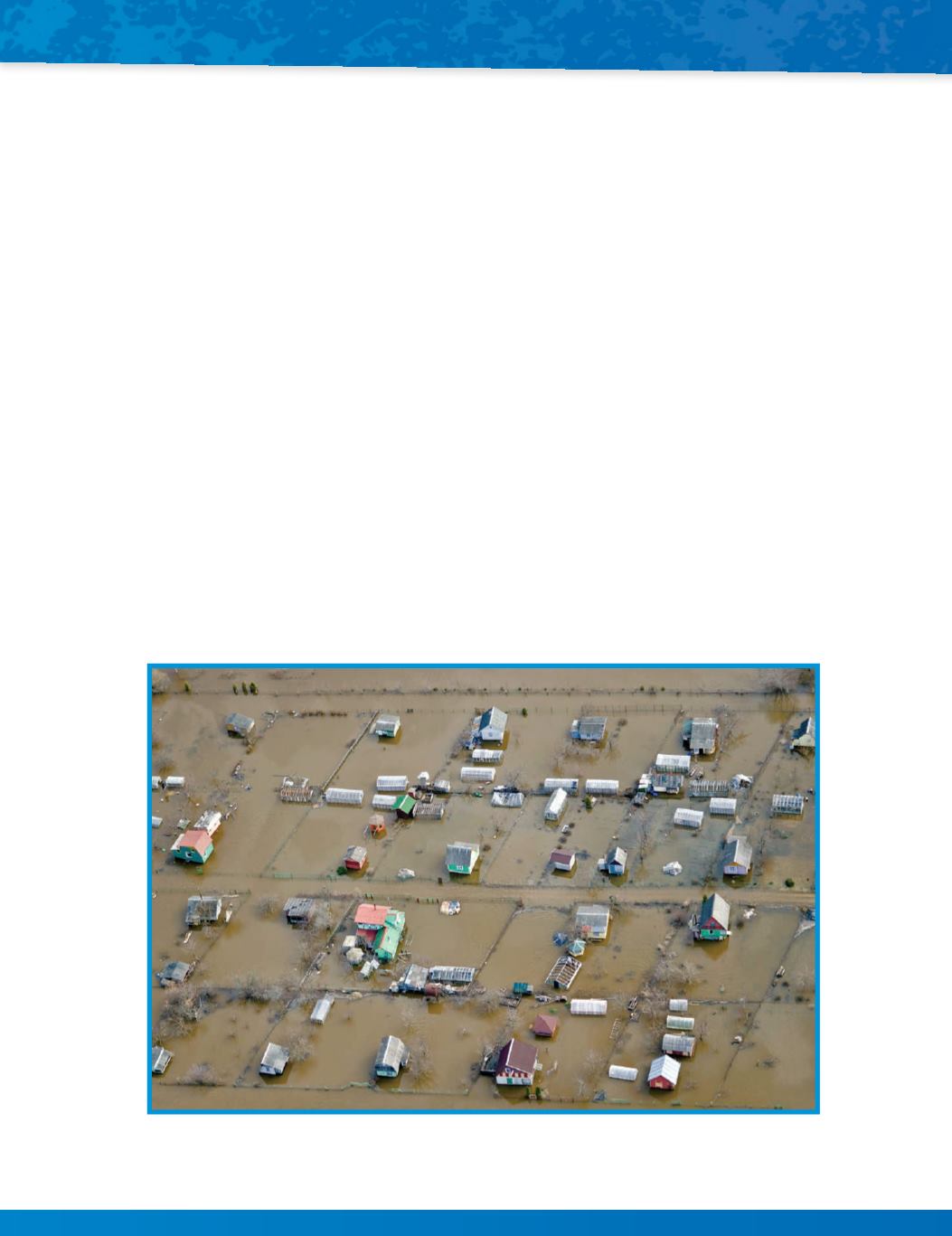

Often, the water flow in a river is low during the summer, fall, and
winter. But in the spring, snow near the river’s source begins to melt.
The meltwater fills the river. If there is a lot of rain during this time,
the rainwater adds to the already heavy flow in the river. This can cause
the river to overflow its bank in a
flood
. The extra water can flow into
farmlands and cities. The result can be damage to crops, houses, stores,
and roads. Floods can also cause the death of large numbers of animals
and people. Floods can be very costly natural disasters.
How can people protect themselves from the dangers of floods?
For years, people have tried to prevent floods by digging deeper river
channels. They have built dams to hold floodwater back. And they have
built artificial riverbanks, or levees, to keep high river water flowing in
the banks. But these expensive solutions often fail and cause even bigger
problems.
Nature has provided some effective defenses against floods. First of all,
we must understand that periodic flooding is a natural and healthy part
of river ecology. And natural floodplains and wetlands are part of river
systems and can reduce water flow. Here’s how.
Flood water can cause a lot of damage.
57









